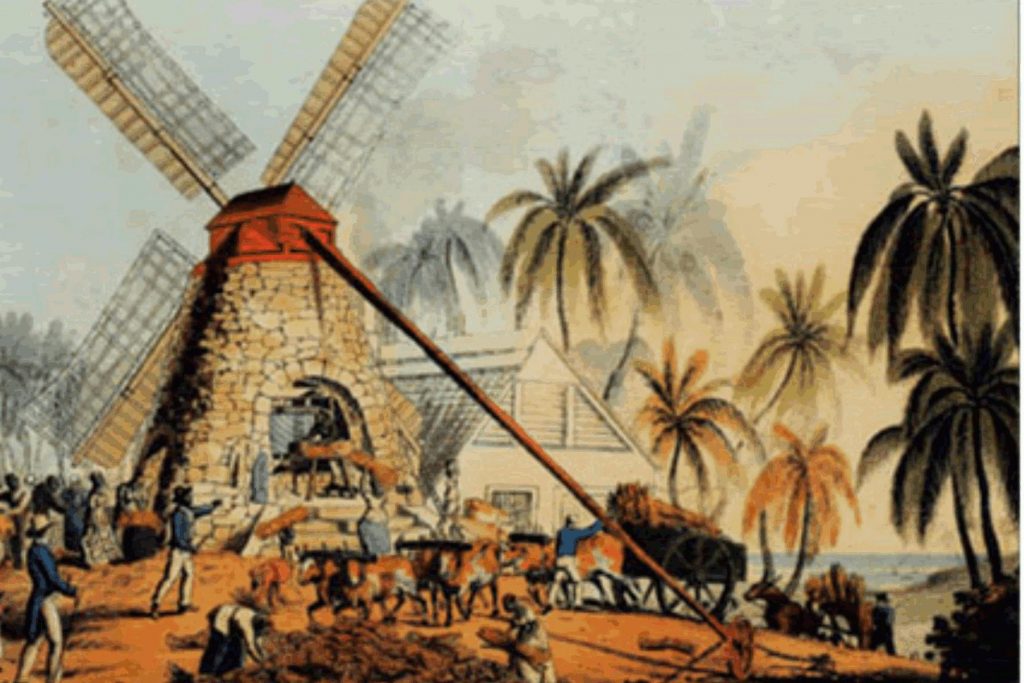About
Type: Extant
Parish: St.John
Founding date: 1700s
See on Google Maps!

Current Status
It is difficult, if not impossible, to locate this estate. It is not shown on any maps, but nearby Buckley’s (#45) was owned by a Reverend Williams, and also close by were two Williams farms. The mill is reportedly made of flint stone, which made for a fairly rough exterior finish.
The remains of a buff house may be found on a small rise to the northwest, along with clumps of spider lilies, which usually denote the grave of a slave since slaves did not have the financial resources to erect a stone monument. The pond has never been dry, and Mr. Nibbs intends to look into the possibility of researching the spring that supposedly feeds it.
The reason this mill does not appear on either Baker’s or Luffman’s maps may be the following:
“As regards the Williams of Williams Farm, the ‘WW’ on the old mill was William Williams, son of Joseph Williams. This family sprung from the Old Road Williams family, but was coloured and illegitimate. William Williams’ brother was a manager here and his daughter married a black man, who is well known here today in business circles – Mrs. S. I. Athill. The last of them left the island years ago and the above lady is dead. The flintstone windmill was built from money obtained under the ‘Earthquake Loan’ of the forties, but apparently did not remain long in operation.”
Archibald Spooner Bendals, Antigua 1909.
Estate Related History/Timeline
In 1743, Edmund Williams owned Tom Moore’s Plantation (#175) of 120 + 50 acres and the Cistern Plantation of 954 1/2 acres as surveyed in that year. Roland Williams owned The Road, Tom Moore’s, and the Cistern in 1784. By 1867, Rowland Edward Williams owned Claremont (#177) and Mountain, both in St. Marry’s Parish, with total acreage of 938.
The Williams Plantation was bounded on the north by the property of James Vaughn, south by the property of William Horne, west by the
property of Samuel Martin, and east by property originally owned by John Lucas, later by Edward Byam, Jr.
An internet search disclosed the will of Joseph Williams, Antigua planter, proved in 1817. According to Vere Oliver’s historical volumes, a memorial to Joseph Williams, located on the Williams estate in Antigua, says he died in 1814 at age 54.
In 1853, the Earthquake Act was enacted in Antigua to assist with the sale of estates when owners were unable to pay their debt, often by auction. At the time, three estates fell under this Act: Mannings (#124), Lower Walrond (#117), and “Williams Farm (#50), which contained 41 acres in St. John’s Parish. The property of William Williams [is] charged with the sum of £94. 10s. amount of installment and interest up to the first day of May, last past £395. 10s payable as in the said here-in before mentioned Act is set forth, and the respective plantations or estate have been twice put up for auction by the Provost Marshall.”
There was another Williams estate, also known as Brodies/Windy Hill in St. Paul’s Parish [see Volume II]. That estate may be the one now known as Windy Hill/Howard’s (#148).
Enslaved People’s History
Based on contemporary research, we have little information to share about the enslaved peoples from this plantation at this time. The remains of a buff house may be found on a small rise to the northwest, along with clumps of spider lilies, which usually denote the grave of a slave since slaves did not have the financial resources to erect a stone monument. We will continue our quest for more information about these vital individuals.
Ownership Chronology
- 1700’s: Rowland Williams
- 1730: Roger Williams Indentured, 470-500 acres.
- 1775: Joseph Williams (1760-1814)
- 1777: Samuel Williams (1777/78 map by cartographer John Luffman.)
- 1851: William Williams – 41 acres
- 1933: Olive & Lauchland Charity
- 2000: Denely Nibbs